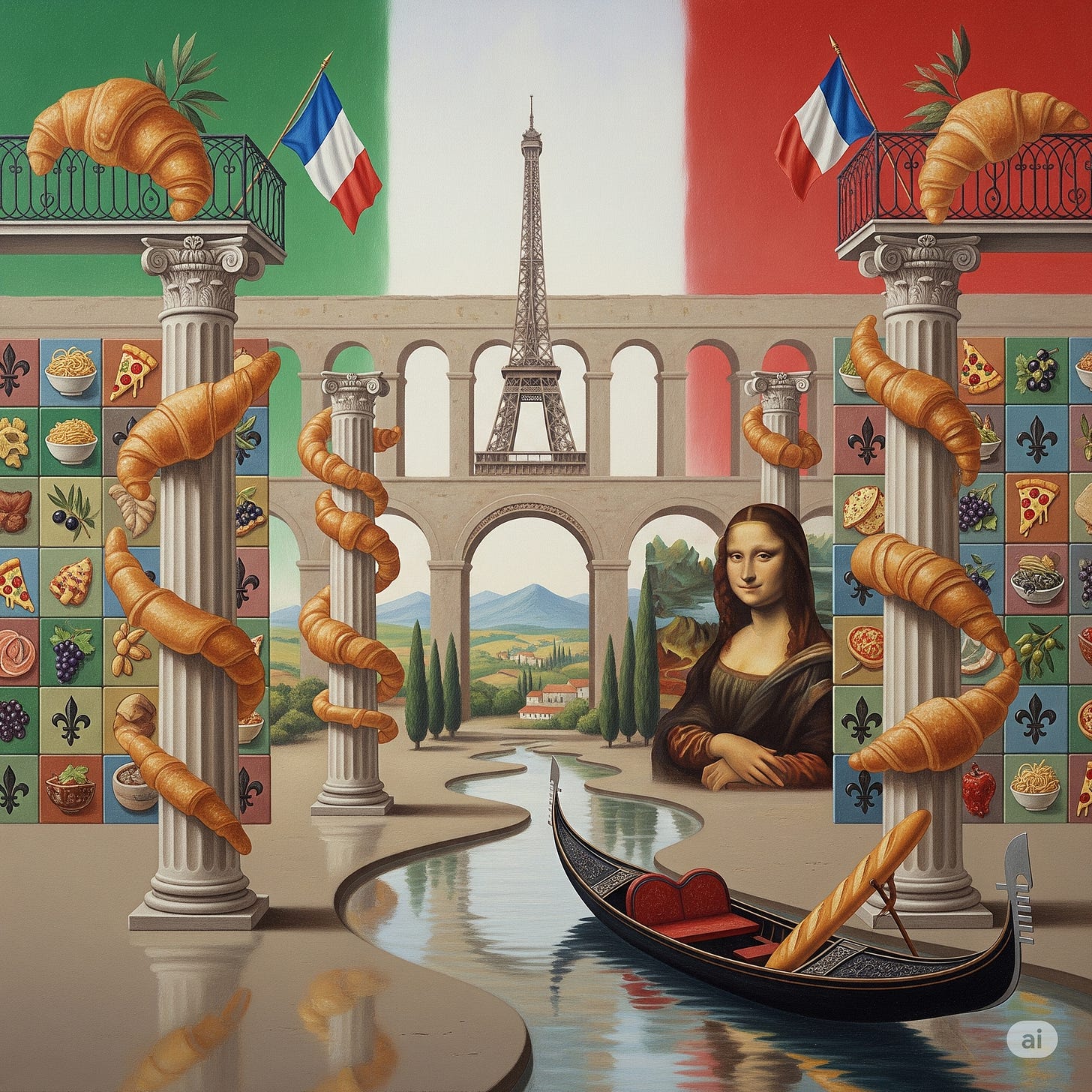The Great French Identity Crisis: When Your Most Famous Icons Are Actually Italian
How France Became the World's Most Successful Cultural Appropriator
Picture this: You're planning the perfect Parisian evening. You'll start with a romantic dinner featuring some classic French onion soup, maybe some macarons for dessert. Then a moonlit stroll to the Louvre to gaze upon the Mona Lisa's enigmatic smile. Perhaps you'll reflect on the grandeur of French history, thinking of Napoleon's conquests that shaped…


